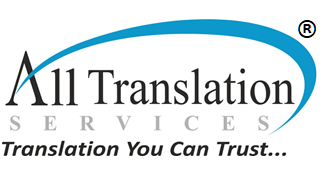The Art of Typesetting and Desktop Publishing in Multiple Languages
The role of typesetting and desktop publishing (DTP) services is pivotal. Ensuring that translated content is not only accurate but also visually appealing and correctly formatted is a crucial aspect of delivering a professional product.
When working with languages other than English, this task can become even more intricate due to the unique challenges each language presents. This blog explores the nuances of typesetting and DTP across various languages and scripts, highlighting key considerations and best practices.
Understanding Typesetting and Desktop Publishing
Typesetting refers to the arrangement of text on a page, encompassing font selection, line spacing, and overall layout. Desktop publishing involves using software to combine text and graphics into digital documents, ready for print or online distribution. Effective DTP ensures that the final product is both aesthetically pleasing and functionally sound, regardless of the language.
Challenges in Typesetting Non-English Languages
Script Directionality: Languages like Arabic and Hebrew are written from right to left, requiring a complete reversal of the typical layout considerations used in left-to-right languages like English. This impacts text alignment, flow, and even the placement of graphical elements.
Character Sets and Fonts: Different languages use different character sets. For instance, Chinese, Japanese, and Korean (CJK) scripts require specific fonts that support thousands of unique characters. Ensuring that these fonts are available and correctly implemented is essential.
Text Expansion and Contraction: Translation can significantly alter text length. For example, German texts are often longer than their English counterparts, while Chinese translations can be shorter. This affects the overall design, requiring adjustments to maintain visual balance.
Diacritics and Special Characters: Languages like Vietnamese and Polish use numerous diacritics, which can affect line spacing and overall readability. Ensuring these characters display correctly across different fonts and devices is crucial.
Cultural Sensitivities: Colors, images, and symbols have different connotations across cultures. A design element that is appropriate in one culture might be offensive or misunderstood in another. Adapting these elements while preserving the document’s intent and aesthetic is a key part of the DTP process.
Best Practices for Multilingual Typesetting and DTP
Choose the Right Software: Professional DTP software like Adobe InDesign, QuarkXPress, and Scribus offer robust multilingual support, including the ability to handle complex scripts and right-to-left text.
Use Unicode Fonts: Ensure that the fonts you select support the full range of characters needed for the target language. Unicode fonts are designed to cover multiple languages and scripts, providing a reliable solution.
Allow for Flexibility in Design: Anticipate text expansion or contraction and design with flexibility. Using adjustable text boxes and ensuring ample white space can help accommodate varying text lengths without compromising the layout.
Work with Native Speakers: Collaborating with native speakers during the typesetting process can help catch nuances and cultural subtleties that non-native speakers might miss. This ensures the final product is both linguistically and culturally accurate.
Test Across Platforms: Ensure that the final document displays correctly on various devices and platforms. Different operating systems and software versions can affect text rendering, so thorough testing is essential.
Case Studies
Arabic Brochure Design: A company needed an Arabic version of their English brochure. The challenge was not only translating the content but also reversing the entire layout. By using right-to-left typesetting and adjusting the placement of images and icons, the final product was both readable and visually coherent for Arabic readers.
Chinese Technical Manual: For a technical manual translated into Chinese, the primary concern was font compatibility and readability. By selecting a high-quality Unicode font and adjusting line spacing to accommodate the more complex characters, the manual maintained its technical accuracy and user-friendliness.
French Marketing Material: When translating marketing materials into French, text expansion was a significant issue. The design team created flexible text boxes and adjusted the overall layout to ensure the text fit well while preserving the original aesthetic.
Conclusion
Typesetting and desktop publishing in multiple languages is a complex but essential part of the translation and localization process. By understanding the unique challenges and applying best practices, language translation companies can deliver high-quality, professional documents that meet the needs of global audiences. Whether it’s a brochure, manual, or marketing material, the right approach to multilingual DTP ensures that every project is both linguistically accurate and visually compelling.
As your language translation company in India, we don’t just deliver high-quality translations. We have a seasoned DTP team that can seamlessly convert your content into a format that works for any language. Contact us today and embark on your successful multilingual journey!
